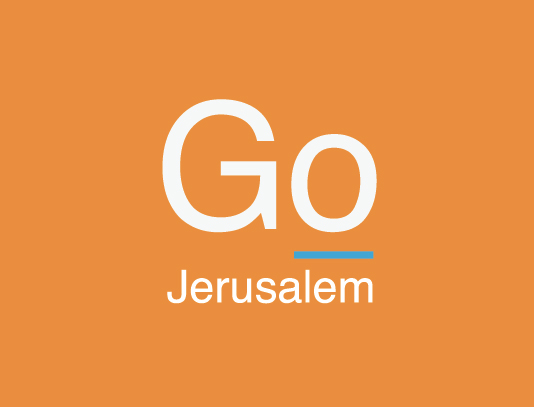Pilgrimage preparations and their ripples

The Director of European Marketing Operations for Israel's Ministry of Tourism, Tzvi Lotan is jubilant when speaking about Pope Benedict XVI's 2009 visit to Jerusalem for the start of his Holy Land visit. He took a moment during the lull between the Pope's landing at Mount Scopus and his visit with President Shimon Peres to speak with GoJerusalem.com.
Tell us please a bit about the logistics involved with preparing for the Pope's arrival. The logistical issues needed to be addressed on a few different fields. First of all, [Pope Benedict XVI] is going to host two different outdoor masses, and we [at the Ministry of Tourism] prepared these spaces for the masses – one in Nazareth and one in Jerusalem [at the Kidron Valley, adjacent to the Garden of Gethsemane].
The site in Nazareth is especially noteworthy, since what we've done there is to prepare the biggest open space in the Middle East – a theater for about 45,000 or 50,000 people. We set up concrete seating for 10,000. I don't know how to describe it – what a difference between before and after. We spent 2-and-a-half months setting it up.
The most important issue with logistics in general is that even if we knew about the Pope's visit a full year ago, for their own reasons, the Vatican didn't want to make it public. The public announcement came four months ago. The arrangements in Jerusalem and especially Nazareth were especially difficult, and I think Israel's investment was something like 45 million NIS ($11 million).
Then we have the security issues. Normally a chief of state needs a deep security system. In this case, the security apparatus was more than normal, because we are speaking about the head of one 1.3 billion Catholics in the world coming to a Jewish country with a very big Islamic minority.
How has it all been going so far? I think until now everything is going wonderfully, and I hope I'll be able to say the same words on Friday afternoon, after he will be on his way.
What does this historic visit mean to Israel in the context of growth among the pilgrimage tourism sector? We are very glad that he is here. It took about 2000 years for the first Pope to come to Israel. It took only nine years between that visit and this one. I hope it makes Israel a part of the normal pilgrimage route that everybody takes. To Rome, Lourdes, Fatima, and so on, but especially to the place where everything began – to Jerusalem, Nazareth and Bethlehem.
The importance of the visit of any Pope to here is not the pilgrims that are coming with him, but the pilgrims coming after him, in his footsteps. With the last visit, in 2000, we doubled the numbers of pilgrims within six months, until the intifada interrupted. Now I hope that there will be no intifada. We hope to at least double the figures of pilgrims we will accept this year, and into the coming years.
For every 100 visitors to Israel, we create 4000 new job positions. Each tourist leaves behind $1500 on average. The added value of tourism, though, is that more or less 85 percent of the revenues from the tourist industry stay in the Israeli economy.
What are your thoughts on Jerusalem's role in the context of pilgrimage tourism? Our research shows that an alarmingly low percentage of tourists to Jerusalem attend cultural events, and one of our goals is to increase awareness of how much the city has to offer. Do you think Jerusalem is on the right path when it comes to this issue? For Jerusalem, the spiritual center of the world, we can find here all of the religions, and we hope that as a result of the Pope's visit, this will be a major step in the bridges for lasting peace. We need visitors, and we need them in Jerusalem.
In the last decade, there's a big change here. For example, since the gates of the former Soviet Union opened, we've received here something like 800,000 immigrants over the course of five years alone. It means that the cultural scene here has changed a lot to make it more open and multilingual.
For links to more of our Pope-related content, and to download a pdf of the special Pope edition of our Everything Jerusalem guide, which includes maps, itineraries and guides to holy places, click here.
2000+ tips and recommendations
Alright, we'll be the first to admit it. Jerusalem's often chilly and often damp winters don't exactly exude...
In a region known for being one of the first in which early humans settled after leaving Africa, and in a city populated...
Looking for a place to begin your morning in luxury and style? Look no further than the American Colony Hotel, which offers...
Jerusalem, the city where kings ruled and sultans sat is no stranger to luxury. Today, even the visiting yeoman can find...
Jewish tradition holds that in the times of the First and Second Temples, all the Jewish people would gather in Jerusalem...
Technically, it's possible to visit Jerusalem without going to the Old City, but it would be hard to say you'd...
Looking for a place to begin your morning in luxury and style? Look no further than the American Colony Hotel, which offers...
The faithful may rhapsodize about the spiritual highs to be reached in the Old City; culture cognoscenti groove on the...
Once upon a time, options for eating out in Jerusalem were limited to local common phenomena such as falafel and schwarma,...
No results to show





|
Text text text
|
||